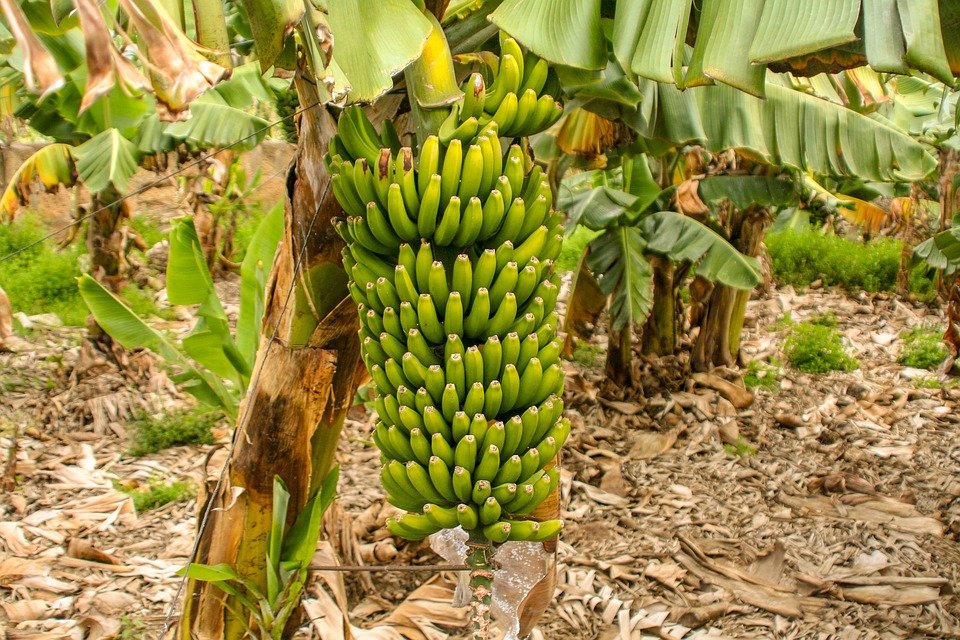Banana Farming secrets revealed
Below is a general guide on bananas, their classification, growth, and management all through to maturity and harvesting.
Classification Bananas are from the family Musaceae. The most commonly grown bananas are classified into two: (i) Musa acuminata and (ii) Musa balbisiana. There is also a crossbreed of the two known as Musa paradisiaca.
Growth requirements
Bananas require a good climate and soils for growth. They best thrive in areas with an altitude of less than 1800m above sea level. However, some other varieties can thrive in higher altitudes. An annual rainfall of between 1,000mm and 2,500mm, with an average of 1,400mm, which is evenly distributed, is ideal. Temperatures of between 20 and 30 degrees Celsius are ideal. Extreme cold weather slows down the rate of growth, hinders inflorescence (development of flowers) and if flowers don’t develop, the fruits may not ripen.
Soil Requirements
Bananas can grow in a wide range of soils. However, well-drained, fertile soils rich in organic matter with a pH of between 5.5 and 6.5 are ideal for optimal growth.
Land preparation
The land should be tilled by ploughing and har rowing to get a fine tilth. Planting holes can then be prepared. Prepare the holes at a spacing of 2.5m by 3.0m for the short varieties (Dwarf varieties such as Dwarf Cavendish) 3.0m by 4.0m for the medium varieties such as Williams and Valery and 4.0m by 4.0m or 5.0 m by 5.0m for the tall varieties such as Poyo and Lacatan. Banana holes should be 90cm by 60cm by 60cm, or they could be 90cm by 75cm by 75cm, if the area has less water.
Planting Bananas are propagated using suckers.
There are four types of suckers, namely: the peepers, sword, maiden and water suckers. The sword sucker emerges from the lower part of the stem, has a well-developed base and narrow sword shaped leaves. The sword suckers are preferred for planting. They form bunches 18 months after planting. The maiden suckers, which are also well developed at the base, form bunches at least one year after planting. The peepers are easy to transport, but they take long to form bunches. Water suckers are not good for planting as they take time to establish. Propagation materials should be chosen from a healthy plant that is disease-free to avoid spread and contamination. Tissue cultured bananas, (which have been developed under strict growth conditions) can also be used for planting. Mix well-decomposed manure and top soil before planting. After planting, the suckers should be mulched.
Maintenance (husbandry)
It is important to maintain your banana crop for 4 to 6 weeks after planting, manual weed ing should be done to reduce competition and possibility of disease-habouring by alternate hosts. Surplus shoots or suckers need to be cut to ensure good growth and development. Do not leave many suckers per stool. Reduce the number of suckers per stool, and leave between three and five banana shoots per stool. For the fi ve plants per stool, leave the main stem, which could bear the bunch, the water, maiden, and sword suckers and the peepers. For the three plants per stool, leave the main stem, the water and sword suckers. This allows bananas to reproduce at different stages. Fewer plants per stool also allow formation of big bunches compared to congested plants per stool.
Pruning
The bananas should be pruned to allow enough light penetration into the stool and good crop development. Pruning reduces accumulation of pests and diseases. When bananas start forming bunches, they may undergo a lot of pressure due to the weight of the bunch. They should, therefore, be supported, especially the tall varieties.
Harvesting
Begin by first cutting off the bunch, then the pseudo stem. For tall varieties, cut the pseudo stem to a considerable height, before supporting the bunch, and cutting it. Later, completely cut to ground level and remove the pseudo stem, to avoid spreading diseases.
Pests and diseases
Common pests for bananas are beetles, the banana rhizome weevil, and ants. However, with good agronomic practices, they will hardly attack your bananas. Practice good farm hygiene such as frequent weed control and pruning to keep pests away. Mulching to conserve moisture. Xanthomonas wilt is a key banana disease characterised by yellowing and wilting of leaves, premature and uneven fruits ripening, yellowish blotches and dark brown scars in the pulp, and yellow ooze from cut pseudostems. Banana bacterial wilt causes rotting from inside. It has no chemical cure, but can be managed by good farm hygiene. Always cut down infected suckers at ground level. By embracing the above agronomic practices, farmers will enjoy the nutritional and economic benefits from bananas.



